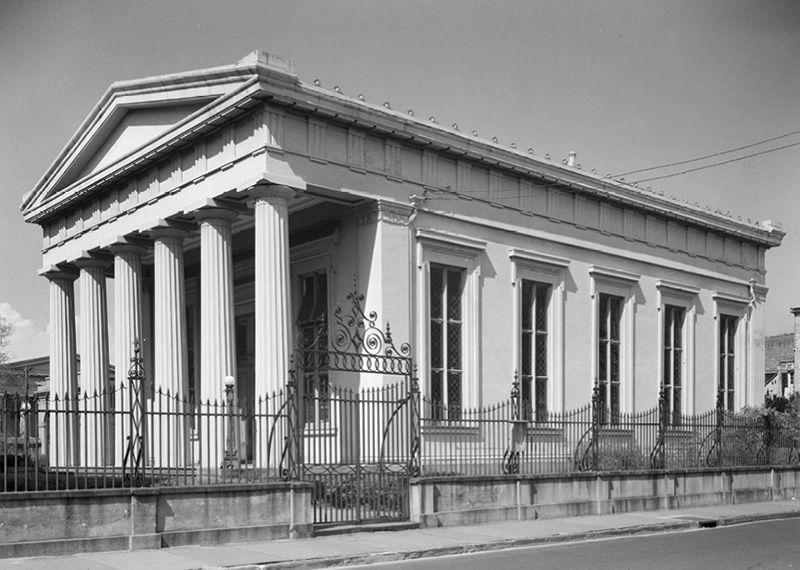The cornerstone was laid in January 1840

Kahal Kadosh Beth Elohim, circa 1938
The cornerstone of Kahal Kadosh Beth Elohim—itself the cornerstone congregation of American Reform Judaism—was laid, with great fanfare, in Charleston on January 3, 1840.
More important than that milestone is the impact that deed would have on American religious history. Jews had arrived in the Lowcountry by the 1690s, formed a congregation by 1749, and erected a structure on Hasell Street in 1794. In 1824, a group of members petitioned to reform the services and liturgy that they believed were fit for the Old World but inappropriate for the New. The reformers were overruled and withdrew, and the synagogue was lost in the 1838 fire that destroyed a large portion of the city.
Within months of the 1840 cornerstone ceremony, another group petitioned for reform, breaking with tradition and suggesting an organ be installed in the new building. This was revolutionary, since nearly all Jewish congregations worldwide had banned instrumental music after the destruction of the second temple in Jerusalem in 70 AD. After heated debates and a legal battle, the more orthodox members withdrew. By the time of the new building’s consecration in 1841, Kahal Kadosh Beth Elohim (Holy Congregation House of God), with its organ in place, was the first reform congregation in the United States.
The Greek Revival structure, recently updated and refurbished, is the second oldest synagogue in this country and the oldest in continual use.